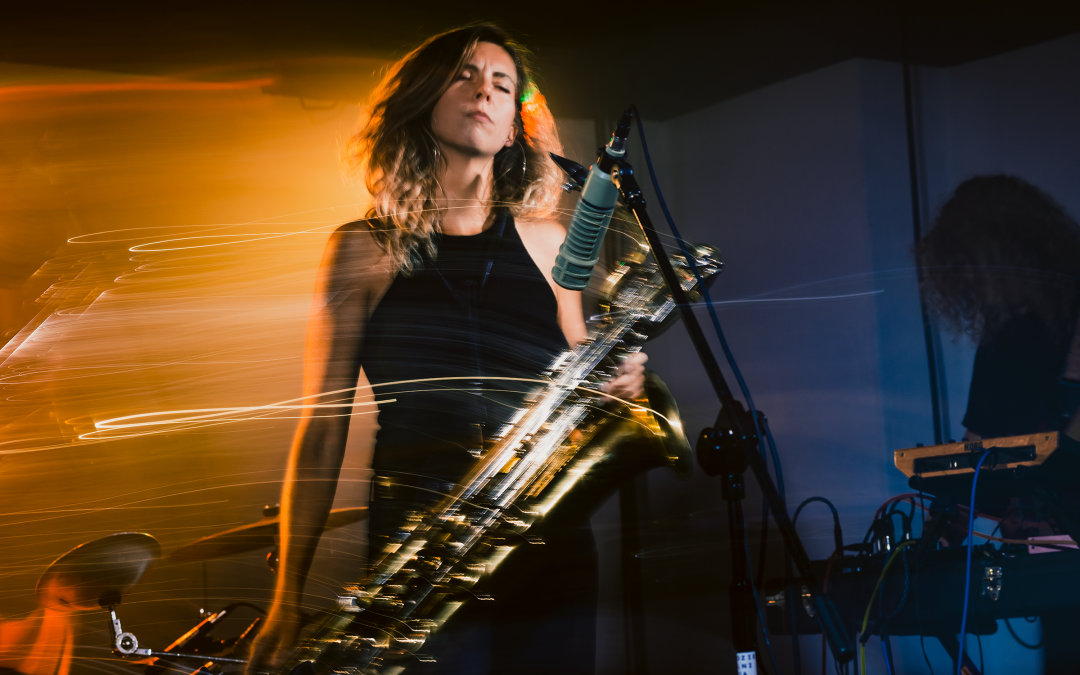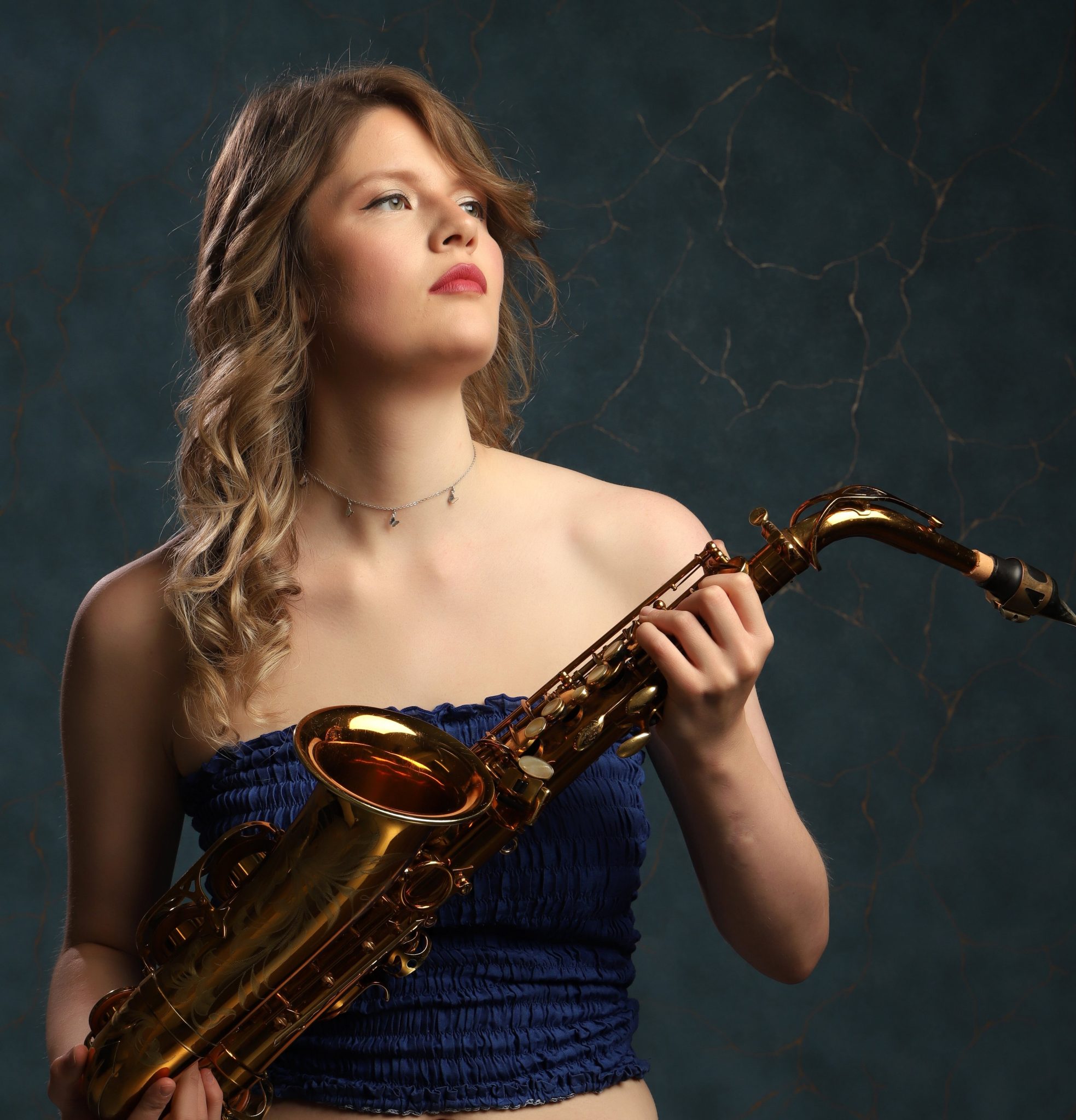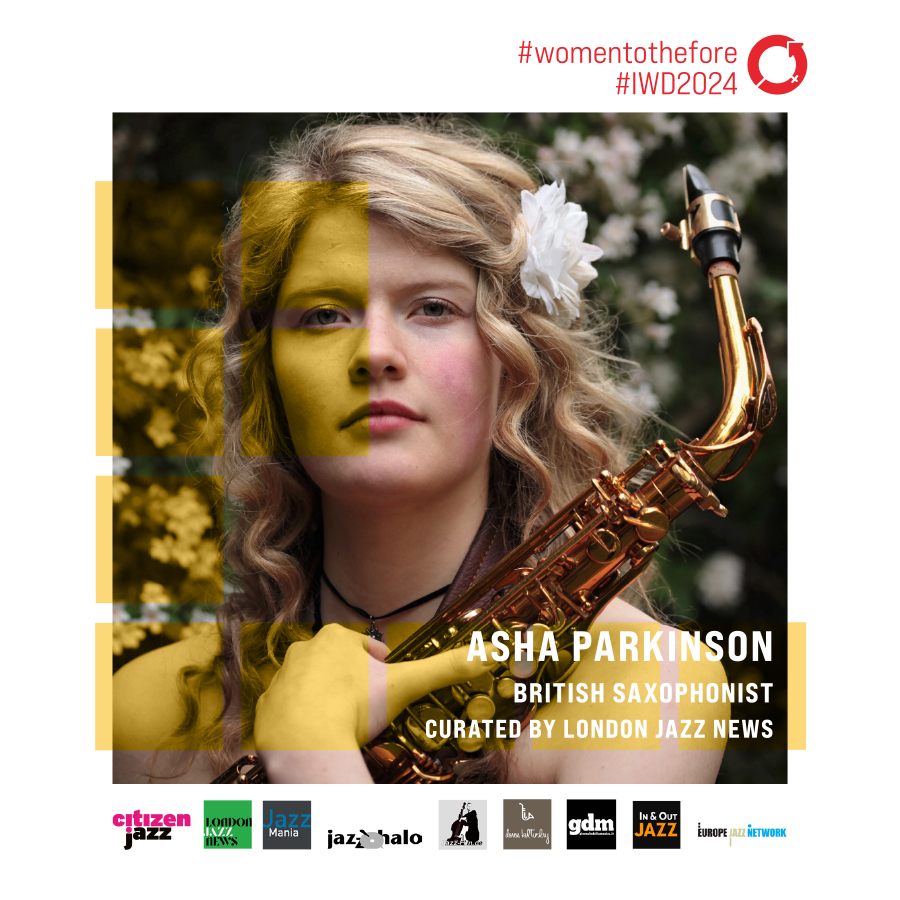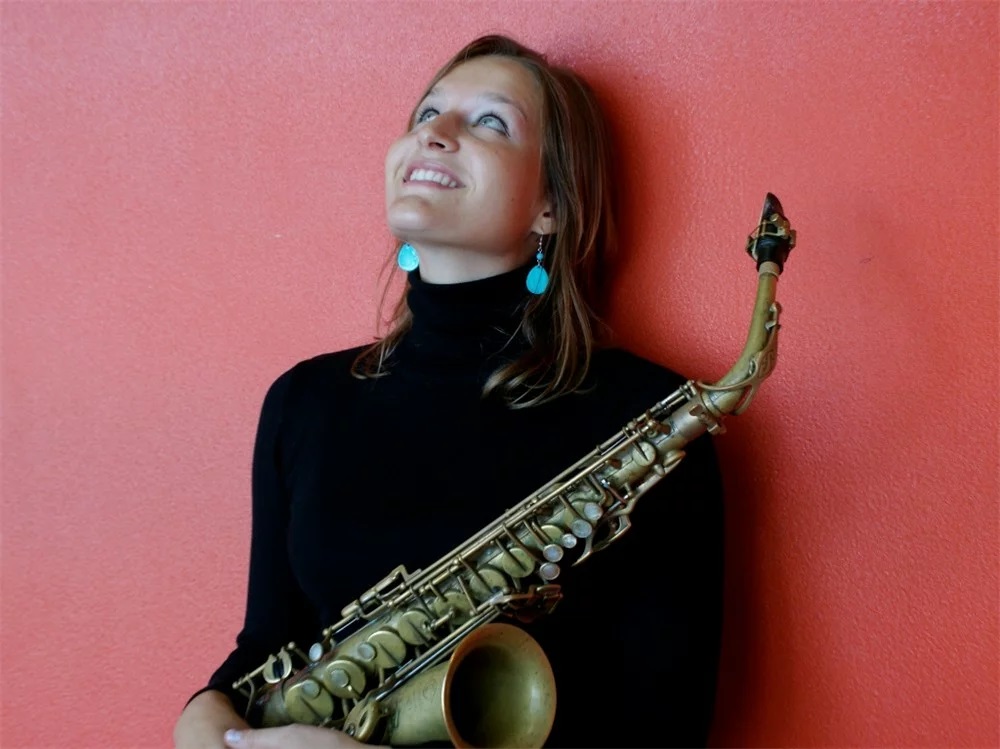
Matylda Gerber
Matylda Gerber
06
Marzo, 2024
Saxofonista, compositora, miembro de los grupos Ślina y sneaky jesus. Coorganizadora de la Orquesta Improvisada de Wrocław. Ganador de premios de la revista Jazz Forum y de la Asociación de Jazz Melomani. Científico y profesional especializado en la intuición y su papel en la toma de decisiones.
Cuando se teclea el nombre de Matilda Gerber en un motor de búsqueda, sorprende la diversidad de los resultados. La sorpresa será aún mayor cuando resulte que todos ellos se refieren a la misma persona.
Empezaremos, pues, a presentar a nuestra heroína con cuestiones no musicales. Matylda Gerber se licenció en Finanzas y Psicología y se doctoró en Ciencias Sociales en la Escuela de Economía de Varsovia, una de las universidades más prestigiosas de Polonia. Su campo de interés es la intuición y su papel en la toma de decisiones. Se trata de un tema de investigación científica poco obvio, pero que se utiliza en muchos campos en todo el mundo. A lo largo de su carrera, Matilda Gerber ha participado, entre otras cosas, en investigaciones sobre el trabajo de analistas criminológicos de departamentos de policía, médicos, empresarios e inversores bursátiles. Un resumen de sus actividades en este campo hasta la fecha es el libro «Intuición. Guía para los que aman reflexionar’.
Y llegados a este punto podríamos preguntarnos ¿por qué si no la música, para alguien que tiene tanto éxito en otro campo? «Nunca fui a la escuela de música, pero recibí clases de piano desde niño. Incluso tomé clases de composición. El saxofón, en cambio, no llegó hasta los 18 años«. Sin embargo, a pesar de involucrarse en conjuntos con el tiempo, la música permaneció en un segundo plano durante mucho tiempo. El gran avance se produjo durante una estancia académica en Londres, que, en el plano artístico, supuso la exploración de la rica escena musical londinense, la participación en jam sessions y un contacto y colaboración escénica con Sarathy Korwar. «En un momento dado me di cuenta de que estaba recibiendo tantos comentarios positivos sobre mi forma de tocar que no podía superarlo. Tras volver a Polonia, decidí que quería desarrollar esto, fui más consciente de este hambre musical que había en mí«. Un estímulo importante llegó cuando la invitaron a actuar en el concierto inaugural del festival Jazztopad de Wrocław.
En la actualidad, su principal actividad musical se desarrolla en dos bandas: Ślina (eng: Saliva) y sneaky jesus. El cuarteto de improvisación Ślina, además de su propia actividad, también graba y actúa con Mikołaj Trzaska, una figura icónica de la escena polaca y europea de improvisación. Toda la historia de esta colaboración comenzó con la búsqueda de Matylda para comprar un saxofón barítono. Uno usado, como tal tiene mejor sonido.
No es tarea fácil, y suele haber cola de gente dispuesta a comprarlo. La venta del instrumento de Mikołaj Trzaska en 2018 no fue diferente, pero una conversación personal y una especie de «audición» hicieron que el barítono fuera a parar a Matilda. «Anteriormente había probado otros saxofones , pero no me gustaba su sonido. Aquí sentí inmediatamente que era lo que buscaba. Y disfruto de su sonido todo el tiempo«. Trzaska tenía curiosidad por ver cómo resultaría el instrumento. Le gustó tanto la música de Ślina que propuso ayudar al grupo a sacar un álbum. Pronto surgió la posibilidad de conciertos conjuntos y una propuesta de grabaciones conjuntas. En 2024, podemos esperar al menos un lanzamiento bajo el nombre de Ślina Trzaska, ya que varias horas de material ya grabado están a la espera de ser reveladas.
Habla Mikołaj Trzaska: Cuando conocí a Matilda, me sorprendió que cogiera el instrumento e inmediatamente empezara a tocarlo muy alto, con un sonido abierto y fuerte. Tenemos algo en común: en el sentido de que Matylda -como yo- empezó a tocar el saxofón a una edad bastante madura y empezó a explorarlo con una mente ya adulta. Y estoy encantado con su evolución, con su forma de tocar, cada vez más interesante y cada vez mejor. Por supuesto, sigue buscando su lenguaje, desarrollándolo todo el tiempo. Pero es consciente de cómo funciona.
Es capaz de descubrir cosas nuevas durante el concierto, durante el proceso creativo. No le asusta el saxofón. Toca tanto el tenor como el alto y el barítono. Sabe de qué habla a través de la música y por qué lo cuenta de esta manera concreta. Y en su caso, uno siente que está contando una historia sobre sí misma a través de la música. Sabe tocar, pero también escuchar lo que sucede a su alrededor en el escenario. Utiliza sus modos de expresión de forma diferente en cada banda.
Tiene el don de encontrar melodías sencillas y sobreconstruirlas. Pero, por otro lado, también tiene paciencia, la capacidad de quedarse con ese primer sonido que aparece. En ella encontramos tanto depredación como ternura, que aparecen cada vez más hondo. Y su fuerza es la sinceridad de este mensaje.



Ślina pone sus miras en la improvisación. Pero Matilda también necesitaba otros retos. De ahí la unión de jesús furtivo. Dividir la actividad en dos bandas es una decisión consciente y meditada. «Siempre pensé que sería guay trabajar con una banda en la que pudiera componer. Tocamos juntos en jam sessions y resultó que nos entendíamos muy bien«. Así que las actividades de los dos grupos se complementan a la perfección. «Las dos bandas son complementarias para mí«.
Sneaky jesus cuenta ya con dos álbumes en su discografía, ambos publicados en el sello londinense Shapes of Rhythm. La banda sorprende y deleita por la ligereza y libertad con que se mueve entre convenciones y estilos. Es música que respira frescura. La diversidad de la narrativa musical es cautivadora, la fluidez de la transición de la delicadeza al frenesí, de la melodía a los ritmos pesados y ruidosos.
Reseña completa del álbum ‘For Chaching Taphed’
jesús furtivo en las redes sociales
Las actividades musicales de Matylda Gerber se complementan con la Orquesta Improvisada de Wrocław, una plataforma que reúne a artistas de diversos géneros musicales interesados en la música improvisada. La orquesta se reúne regularmente para ensayar y organiza conciertos cíclicos en los que los grupos actúan en formaciones organizadas al azar. La orquesta también ofrece conciertos bajo su propio nombre con una formación completa de una docena de músicos. Durante el festival Jazztopad de 2023, Matylda también dirigió una banda juvenil de jazz, preparando su actuación. Otra experiencia importante de la artista fue su participación en dos sesiones de la Plataforma Internacional de Jazz – talleres en Łódź y Oslo.
Todo ello ha sido reconocido por la comunidad jazzística con dos importantes y prestigiosos galardones concedidos a Matylda Gerber en 2023. En la encuesta de la crítica realizada por la revista Jazz Forum, ganó en la categoría Rising Star, y fue galardonada con el mismo título en la Gala de la Asociación Jazz Melomani.

Este artículo se publica simultáneamente en las siguientes revistas europeas, en el marco de » Giant Steps «, una operación para destacar a las jóvenes músicas de jazz y blues : Citizen Jazz (Fr), JazzMania (Be), Jazz’halo (Be), LondonJazz News (UK), Jazz-Fun (DE), Giornale della musica (IT), In&Out Jazz (ES) y Donos Kulturalny (PL).
This article is co-published simultaneously in the following European magazines, as part of « Giant Steps » an operation to highlight young jazz and blues female musicians : Citizen Jazz (Fr), JazzMania (Be), Jazz’halo (Be), LondonJazz News (UK), Jazz-Fun (DE), Giornale della musica (IT), In&Out Jazz (ES) and Donos Kulturalny (PL). #Womentothefore #IWD2024







































Comentarios recientes